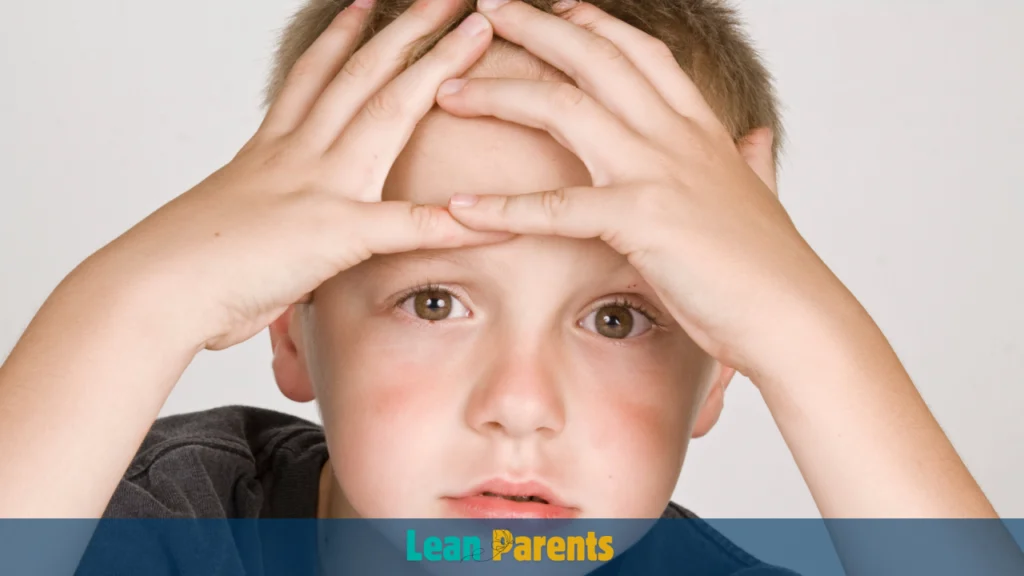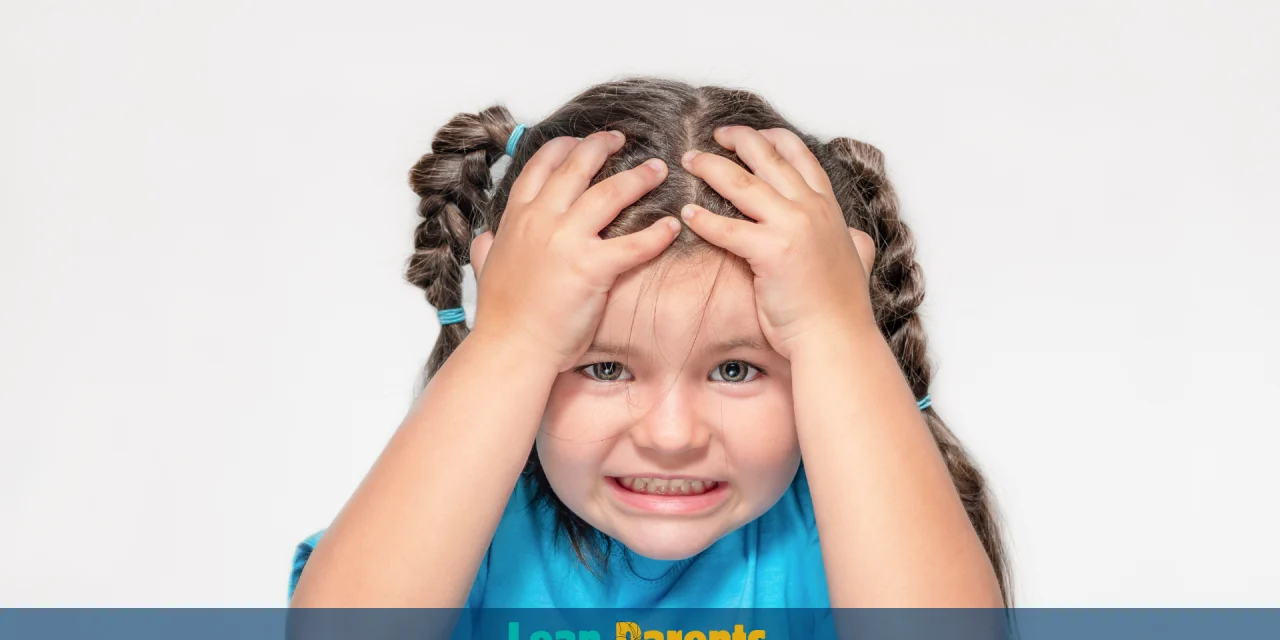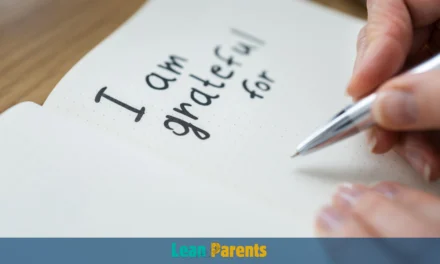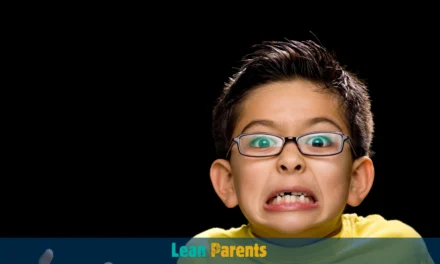As parents, we see our kids get frustrated sometimes. It’s tough, but it’s a normal part of growing up1. By teaching our kids how to handle frustration, we help them grow strong and learn to deal with life’s ups and downs.
Learn seven ways to turn frustrating moments into chances for growth and learning. Find out how to boost your child’s emotional smarts, problem-solving skills, and happiness when they’re feeling upset.
Key Takeaways
- Frustration is a normal part of child development that can be used as an opportunity for growth.
- Positive response strategies can help children develop emotional resilience and healthy coping skills.
- Active parental involvement in emotional development can make the learning phase less frustrating for children.
- Recognizing and labeling emotions enhances a child’s emotional development.
- Providing breaks and redirecting children to tasks they excel at can help regulate emotions.
Understanding Child Frustration: A Parent’s Guide
As a parent, dealing with your child’s frustration can be tough. It’s key to know that frustration is a normal part of growing up. Understanding why and how your child feels helps you support them better.
Common Signs of Frustration in Children
Children show frustration in many ways, like tantrums or acting out. It’s normal for young kids to have outbursts sometimes. But if it keeps happening, it might be time to get help from a mental health expert or a parenting program2.
It’s important to look at why your child is acting out. This helps you decide if they need a therapist’s help2.
The Impact of Frustration on Child Development
Frustration can affect a child’s feelings, social skills, and school work2. If not handled, it can lead to bigger problems later on. But, there are programs that can help kids manage their feelings and do better in school2.
Why Children Experience Frustration Differently
Every child feels frustration in their own way, based on their age and personality3. Some kids might get upset at bedtime or with homework. It’s important for parents to understand these patterns to help their kids better3.
By knowing how frustration affects kids and why they feel it differently, parents can help more. This way, they can support their children through tough times23.
The Importance of Emotional Recognition in Children
Emotional intelligence is key for a child’s growth and happiness. Teaching kids to identify and name their helps them handle frustration better. This also boosts their emotional growth4.
Studies show that even seven-month-old babies can tell the difference between scared and happy faces4. By the time they are preschoolers, most can spot and name basic emotions like happiness and sadness4. But, it takes longer for them to understand more complex feelings like fear and anger4.
- Children are best at spotting happy faces, then other basic emotions, but struggle with neutral ones4.
- Mothers’ depression and negative parenting can hurt a child’s ability to recognize emotions, especially girls4.
- Children who are abused or neglected have different challenges in understanding emotions. Abused kids are better at seeing angry faces, while neglected ones struggle4.
Having emotional intelligence brings many benefits to kids. It helps them focus better in school, build stronger friendships, and feel more empathy5. By teaching kids to understand and manage their feelings, we help them grow up to be emotionally smart5.
Using emotional words and tools like the “mood meter” in daily life can teach kids important skills5. By improving emotional intelligence, we prepare kids to face challenges, form deep connections, and succeed in life45.
Building Strong Frustration Response Skills

Childhood is full of ups and downs, with frustration being a big part of it. As parents, teaching our kids to handle frustration is key for their emotional growth. By teaching them to manage their feelings and creating safe places to talk about them, we help them grow strong and find ways to deal with tough times.
Teaching Emotional Self-Regulation
Teaching kids to control their emotions is a great way to tackle frustration. Methods like deep breathing, counting, and mindfulness help them find ways to calm down6. Being around animals can also lower stress and blood pressure6. Gardening and taking care of plants can have similar soothing effects6. These skills help kids handle frustration better and feel more in control.
Creating Safe Spaces for Expression
It’s also vital to create places where kids can freely share their feelings without fear of judgment7. Frustration is a normal reaction to stress in many areas of life7. Giving kids chances to talk about their feelings, through art, music, or even cleaning6, helps them release emotions and learn to cope better7. These safe spaces help kids deal with frustration in a healthy way.
By using a mix of teaching emotional control and creating safe spaces, we help kids become resilient and solve problems. With patience and support, we give them the tools to succeed, even when faced with tough situations.
Role of Parents in Managing Child Frustration

As parents, we play a crucial role in helping kids deal with frustration. We can show them how to handle tough feelings, offer steady support, and create a safe space for emotional growth8. By accepting a child’s feelings, we teach them that all emotions are important and deserve attention8.
Showing kids how to manage our own frustration is key8. When they see us handle anger well, they learn how to do the same8. Also, by explaining why they get angry, we help them feel more understanding and empathetic8.
Setting clear rules and consequences helps kids feel secure and in control8. By knowing what makes them upset, kids can make better choices when faced with tough situations8. The “Stop, Think, Choose” method is a great way to teach them this skill8.
| Key Parental Strategies | Benefits |
|---|---|
| Validating Emotions | Helps children feel heard and understood |
| Modeling Healthy Responses | Teaches children effective coping mechanisms |
| Addressing Underlying Feelings | Promotes a more empathetic approach to frustration |
| Establishing Structure and Consistency | Provides children with a framework for managing emotions |
| Recognizing Emotional Triggers | Empowers children to make conscious choices |
As parents, we guide our kids through the ups and downs of emotional growth. By being supportive and positive, we help them overcome frustration and grow strong8.
“Emotions are the messengers of the body, indicating that something is important and requires attention.”9
Effective Communication Strategies During Frustrating Moments
When you’re dealing with frustrating situations, it’s key to keep talking openly and kindly with your child. Good communication helps you get through tough times together and find positive ways out10.
Active Listening Techniques
Listening well is a strong tool that makes your child feel understood. Paying full attention, looking into their eyes, and asking questions shows you really get what they’re saying11. It’s not just about hearing them; it’s about creating a safe space for real talks.
Using Supportive Language
How you talk can really affect how your child handles tough times. Using kind words that show you get their feelings and guide them is very effective. Saying “I” instead of “you” helps avoid blame and makes them more open to your help11.
Learning these ways to talk can help your child deal with frustration better10. Good communication is about sharing your thoughts and feelings, but also listening and understanding with empathy11.
Staying calm and patient, even when you’re upset, helps solve problems and builds better relationships10. It’s important to look for solutions, not just problems. This makes your child feel more in control and less stuck11.
“Effective communication is the foundation of healthy relationships, especially when navigating challenging emotions like frustration and anger.”
Using these communication tips can make your child feel heard, understood, and supported. This leads to stronger, more lasting bonds1011.
Creating a Supportive Environment for Emotional Growth
Creating a supportive environment is key for a child’s emotional growth and strength. A positive home atmosphere lets kids share their feelings safely. It helps them learn how to handle tough times12.
Setting clear, consistent routines is a smart move. It makes kids feel safe and less anxious13. Family rituals, like daily chats or game nights, also build strong bonds and a sense of belonging.
Positive parenting is vital too. Listening well and understanding their feelings helps kids grow emotionally12.
Having a special “calm down” area is also helpful. It could be a cozy spot, toys that calm, or a quiet reading area. This lets kids manage their feelings better on their own.
| Strategies for a Supportive Environment | Benefits |
|---|---|
| Establish consistent routines | Promote security and reduce frustration |
| Incorporate family rituals | Strengthen emotional bonds and belonging |
| Practice active listening and validate emotions | Develop self-awareness and emotional intelligence |
| Provide designated “calm down” spaces | Empower children to self-regulate |
By focusing on a supportive environment, parents help their kids grow emotionally. This builds resilience and well-being. It prepares kids to face life’s ups and downs with confidence and kindness.
Positive Reinforcement and Frustration Management
As parents, we often face the tough task of dealing with our children’s frustration. The key to helping them through these tough times is positive reinforcement. Using praise, encouragement, and techniques to build confidence can help them overcome frustration and learn important life skills.
Praise and Encouragement Methods
Positive reinforcement is a strong tool for shaping a child’s behavior and resilience. Research shows that rewarding good behavior, like paying second-grade students for reading, can boost reading skills14. Schools in the U.S. have mostly banned corporal punishment because it can lead to fear, aggression, and antisocial behavior in kids14. Instead, we should focus on praising and encouraging good behavior.
Effective praise and encouragement include recognizing effort, celebrating small wins, and giving genuine positive feedback. By using supportive words and showing a child’s progress, we can build their confidence and motivation. This helps them face tough situations15.
Building Confidence Through Success
Positive reinforcement not only shapes behavior but also boosts a child’s confidence. By rewarding small steps towards a goal, we guide them towards success14. This method, inspired by B.F. Skinner, is a preferred way to change behavior because it positively affects a child’s self-esteem and resilience14.
Using primary and secondary reinforcers, like stickers or praise, can encourage learning and good behavior14. By consistently recognizing and celebrating a child’s progress, we empower them to face challenges with confidence and determination.
“The greatest gift we can give our children is the confidence to be themselves.” – Unknown
Teaching Problem-Solving Skills to Frustrated Children
Children face many problems every day16. Teaching them how to solve problems is key for their growth and success. This way, we help them become confident and strong16.
Children who can solve problems well manage their feelings better. They think creatively and keep trying until they find a solution. This is what a growth mindset is all about16.
Teaching problem-solving skills depends on the child’s age and how they think. For kids aged 3-5, teaching them to manage their feelings first helps16. We can say “Show me the hard part” to make it less scary16. Playing, solving puzzles, and reading storybooks also help develop these skills16.
For kids aged 5-7, we can teach them a step-by-step problem-solving process16. This includes feeling, defining, brainstorming, assessing, and choosing a solution16. Using craft materials and asking open-ended questions boosts their thinking skills16.
Teaching children to solve problems helps them deal with frustration and grow17. Recognizing and talking about frustration helps them focus on solutions17. Taking breaks and trying new approaches can lead to creative solutions17. Doing projects together also helps them practice managing frustration17.
Some learning difficulties, like dyslexia and dysgraphia, can make kids more frustrated in school18. Using assistive technologies can help reduce frustration and improve learning18.
By teaching problem-solving and frustration management, we empower kids to face challenges with confidence16. This approach supports their development and prepares them for success in the future.
When to Step Back: Allowing Children to Work Through Frustration
As parents, we often jump in when our kids get frustrated. But letting them have a controlled struggle can really help them grow. Research shows kids are naturally assertive19 and might make things worse19. By stepping back and setting appropriate boundaries, we let our kids handle their frustration management on their own.
Finding the right balance is key. We should support our kids but also let them solve problems by themselves. Even though they might get frustrated19 or defiant19, we shouldn’t rush in. Instead, we can guide them, cheering them on as they deal with their feelings.
Benefits of Controlled Struggle
Letting kids handle their frustration helps them grow strong. They learn to be resilient, self-reliant, and manage their emotions. Studies show many parents want to teach their kids to make good choices19 and solve problems19. By embracing the controlled struggle, we help them develop these important skills for success.
Setting Appropriate Boundaries
It’s crucial for parents to set parental boundaries that let kids work through frustration safely. This means setting clear rules, offering emotional support, and stepping in only when needed. Kids might learn from their parents’ behavior19 and often have power struggles19. By setting boundaries and showing respect, we teach them to handle their emotions well.
The goal is to make our kids self-reliant problem-solvers. By finding the right balance between support and independence, we help them develop the skills to overcome challenges and build resilience.
Physical Activities for Frustration Relief
When kids get frustrated, it’s key to find healthy ways to deal with it. Physical activities can help them manage stress and control their feelings20. Studies show that aerobic exercise can lower anxiety, depression, and anger in people of all ages20.
Going for a brisk walk is a simple yet effective way to help kids20. Research shows that just 10 minutes of walking can reduce anger in young adults. Tai chi is also good, as it can lower blood pressure20.
- Yoga is a great choice for frustration relief, as20 one study found it better than walking for mood and anxiety.
- Boxercise workouts are excellent, as they20 work the whole body, burn calories, and build strength.
- Jumping rope is fun and effective for20 increasing heart rate, burning calories, and needing little equipment.
Physical activity does more than just help with frustration20. It can also lower the risk of diseases like type 2 diabetes and heart disease21. Regular exercise is great for reducing stress and anger.
When picking physical activities for kids, think about their age, interests, and skills. A regular routine of physical activity can greatly improve their emotional control and overall health21. It’s also important to know what makes them angry and how to handle it.
While physical activities are great for managing frustration, it’s also crucial to tackle the root causes of a child’s anger21. Talking to a psychiatrist or psychologist is vital if anger leads to harmful behavior.
Developing Long-term Coping Mechanisms
Dealing with childhood challenges can be tough. But teaching kids effective coping mechanisms helps them handle frustration. It also builds emotional resilience for the long haul22. By learning to recognize their emotional triggers and create their own strategies, kids become more adaptable and better at dealing with stress22.
Coping means adjusting to new demands or stressors, which takes more effort and energy than usual routines22. To help kids develop lasting coping skills, it’s key to encourage consistent practice and support22. Here are some ways to do this:
- Help kids find their emotional cues and favorite coping methods, like deep breathing, journaling, or exercise.
- Show them healthy coping behaviors and accept their feelings.
- Create a safe space where kids can share their emotions and work through frustrations.
By learning various coping mechanisms, kids can grow emotionally strong. This helps them deal with life’s ups and downs22. It’s not just about feeling better now but also about building a strong emotional foundation for the future23.
| Healthy Coping Strategies | Unhealthy Coping Strategies |
|---|---|
|
|
Building long-term coping mechanisms is a journey. With patience and practice, kids can learn to face challenges with more resilience and flexibility24.
Warning Signs: When Professional Help May Be Needed
It’s important to know when your child needs professional help with frustration. Some behaviors and emotional patterns might need the help of experts. Getting professional support can really help kids deal with big behavioral issues and emotional health problems.
Look for signs like changes in thoughts, moods, or body for two weeks or more. This could mean your child needs help25. Signs include feeling worried, angry, or tired, and having trouble with tasks. These signs help find mental health issues25. You can call or text 988 or visit 988lifeline.org for help anytime25.
Watch for signs in thoughts like suicidal thoughts or trouble focusing. Body changes like sickness or sleep issues are also important25. Behavioral changes like neglecting self-care or legal problems are signs too25.
For kids, look for changes in school or behavior like worrying or tantrums. This helps spot mental health issues in children25. Online screenings from Mental Health America can also help25.
Anger management therapy helps with constant irritability or anger26. Uncontrolled anger can harm mental and physical health26. It can lead to anxiety, depression, and even heart disease26.
Chronic anger can cause anxiety, high blood pressure, and health problems26. It can also lead to mental health issues like depression26. Physical effects include high blood pressure and heart rate, raising the risk of strokes and heart attacks26.
If anger affects daily life and relationships, get professional help26. Mental health experts can help find and fix anger issues through counseling26. Therapy options include one-on-one or group sessions, and special techniques like play therapy for kids26.
Remember, asking for professional help is brave, not weak. By spotting warning signs early, parents can help their kids overcome behavioral issues and emotional health challenges2526.
Conclusion
Parenting with patience and understanding is key for kids to handle frustration well. By using the strategies from this article, parents can help their kids deal with tough times. Finding a balance between being positive and setting boundaries is important. It lets kids feel their emotions and learn to manage frustration27.
Every child is different, so parents need to adjust their approach. By noticing when kids are frustrated, listening to them, and teaching them to solve problems, parents help a lot. This way, kids learn to handle frustration and grow emotionally2728.
Teaching kids to handle frustration well is good for them now and in the future. It can help them avoid health problems, improve their relationships, and be stronger when faced with challenges. By focusing on teaching frustration response, parents create a supportive space for their child’s emotional growth29.
FAQ
What are the common signs of frustration in children?
How does frustration impact child development?
Why is it important to help children recognize and label their emotions?
What are some strategies for teaching children emotional self-regulation techniques?
How can parents model appropriate responses to frustration?
What are effective communication strategies to use during frustrating moments?
How can a home environment support emotional growth and resilience?
What are effective praise and encouragement methods to support children through frustrating experiences?
How can parents teach children problem-solving skills to manage frustration?
When is it appropriate to step back and let children work through frustration independently?
What physical activities can help children relieve frustration and manage stress?
How can parents help children develop long-term coping mechanisms for managing frustration?
When should parents seek professional help for a child struggling with frustration?
Source Links
- Parenting Tip of the Week – Helping Kids Deal with Emotions like Frustration | Prevent Child Abuse America
- Here’s advice from psychologists on how to help kids cope with anger and frustration
- Parents Guide to Problem Behavior
- Emotion Recognition in Preschool Children: Associations with Maternal Depression and Early Parenting
- Teaching Emotional Intelligence in Early Childhood
- 18 Ways to Cope with Frustration
- 7 Ways to Reduce Frustration and Stress
- Managing Frustration and Difficult Feelings in Gifted Children – Davidson Institute
- How to Manage Your Anger and Frustration as a Parent
- How to Communicate When You’re Upset – Be Inspired Counseling & Consulting
- Taming Anger: Effective Communication Strategies | Ahead App Blog
- 5 Ways to Support Social-Emotional Development in Early Childhood
- Promoting Social-Emotional Development Through Supportive Environments and Activities
- Reinforcement and Punishment | Introduction to Psychology
- 5 ways to manage behaviour using positive reinforcement
- How to Teach Problem-Solving Skills to Children and Preteens
- How to Prepare Your Kids for Effectively Dealing with Frustration – A Fine Parent
- 7 Ways to help a frustrated student
- 7-Year-Old and High Level of Frustration
- The Best Exercises for When You’re Feeling Angry
- Anger Management Exercises: 9 Exercises to Help Curb Your Anger
- Stressors: Coping Skills and Strategies
- Coping Mechanisms – StatPearls – NCBI Bookshelf
- Healthy Coping Skills for Uncomfortable Emotions
- Signs of Needing Help
- How to Know If You Need Therapy for Anger Issues – Atlantic Behavioral Health
- Frustration
- Control anger before it controls you
- Strategies for controlling your anger: Keeping anger in check






I definitely wanted to construct a simple comment in order to thank you for these nice solutions you are showing on this website. My time-consuming internet search has finally been compensated with good knowledge to write about with my friends and classmates. I would declare that most of us site visitors are definitely blessed to dwell in a fabulous website with very many lovely people with good principles. I feel rather blessed to have seen the webpage and look forward to so many more fun times reading here. Thanks a lot once more for a lot of things.